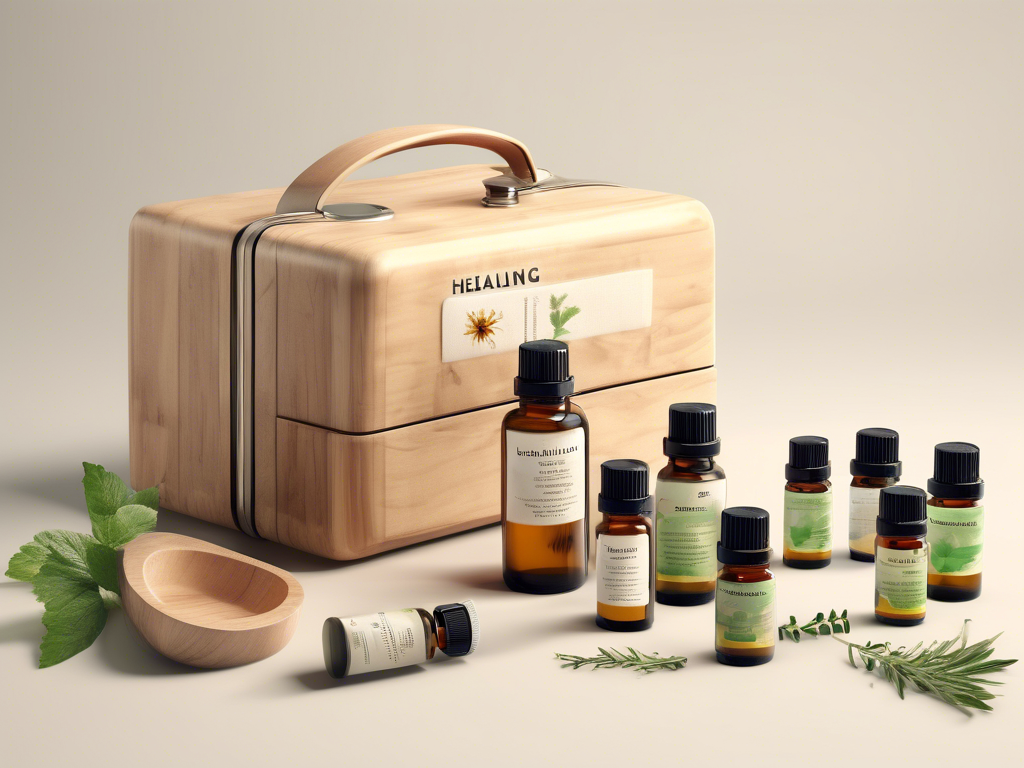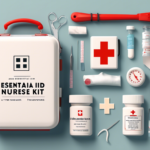In an age where health and wellness are increasingly prioritized, the allure of natural remedies has never been stronger. Enter the world of essential oils, nature’s potent elixirs that promise not only to enhance your well-being but also to serve as reliable resources in times of need. Imagine having a compact first aid kit essential oils within reach, empowering you to tackle minor ailments and injuries with the grace of nature’s gifts.
As we step into 2024, it’s crucial for individuals and families alike to be prepared for unexpected health challenges while staying aligned with holistic practices. The concept of an essential oil first aid kit is more than just a trend; it’s a movement toward embracing the earth’s resources to support our health. From soothing headaches to alleviating muscle pain, essential oils possess a versatility that can transform your approach to everyday health issues.
This article will guide you through the essentials of creating your own first aid kit essential oils, featuring in-depth discussions on the top ten oils to include, their healing properties, and how to blend them effectively for maximum impact. By harnessing the power of nature, you can create a toolkit that not only provides immediate relief but also encourages a deeper connection with natural healing methods. Join us as we explore the art of crafting an essential oil first aid kit, ensuring you’re ready for any health hurdles that come your way.
Discover the Power of Nature: Creating Your Essential Oil First Aid Kit
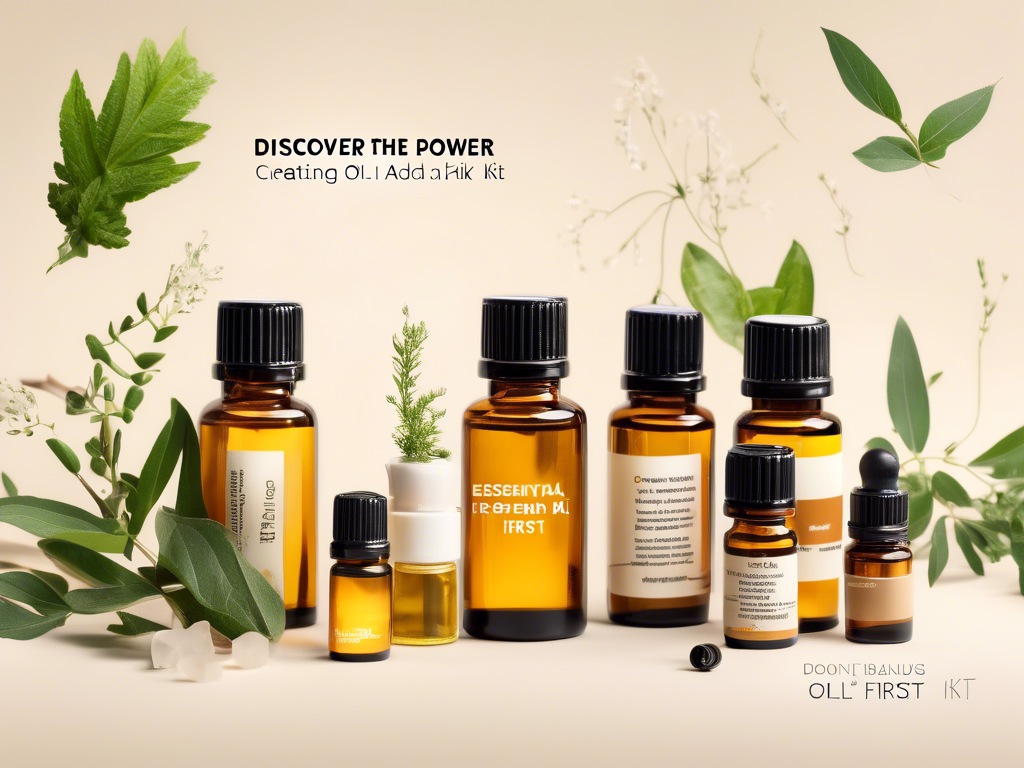
Understanding the Benefits of an Essential Oil First Aid Kit 🌿
An essential oil first aid kit harnesses the healing properties of nature to address minor ailments and support overall well-being. By incorporating essential oils into your first aid routine, you can tap into their anti-inflammatory, antiseptic, and calming effects. This natural approach not only promotes physical healing but also enhances emotional balance, making it an invaluable resource for families and individuals seeking holistic health solutions.
Key Ingredients for Your First Aid Kit Essential Oils 🏥
To create an optimal first aid kit essential oils, focus on these key oils known for their therapeutic properties:
– **Lavender**: Excellent for burns, cuts, and promoting relaxation.
– **Tea Tree**: A powerful antiseptic and anti-fungal agent, perfect for treating infections.
– **Peppermint**: Useful for headaches and muscle aches due to its soothing properties.
– **Eucalyptus**: Great for respiratory issues and as a natural insect repellent.
– **Frankincense**: Supports skin regeneration and reduces inflammation.
By including these oils in your kit, you’ll have effective remedies at your fingertips!
How to Use Essential Oils Safely and Effectively ⚖️
Safety is paramount when using essential oils. Here are some important guidelines to follow:
1. **Dilution**: Always dilute essential oils with a carrier oil (like coconut or jojoba oil) before applying them to the skin to prevent irritation.
2. **Patch Test**: Conduct a patch test on a small area to check for any allergic reactions.
3. **Storage**: Store your oils in a cool, dark place away from direct sunlight to maintain their potency.
4. **Consultation**: Seek advice from a healthcare professional if you are pregnant, breastfeeding, or have underlying health conditions.
Following these steps will help ensure that your essential oil first aid kit is both safe and effective.
Essential Oil Blends for Specific Ailments 🧴
Creating blends can enhance the effectiveness of your first aid kit essential oils. Here are a few recommended blends for common issues:
– **Sore Muscles**: Mix 3 drops of peppermint oil, 2 drops of eucalyptus oil, and 1 tablespoon of carrier oil for a soothing massage.
– **Cuts and Scrapes**: Blend 2 drops of tea tree oil and 1 drop of lavender oil in 1 tablespoon of a carrier oil for a healing ointment.
– **Calming Anxiety**: Combine 3 drops of lavender oil and 2 drops of frankincense oil in a diffuser to create a soothing atmosphere.
These blends can provide targeted relief and promote faster healing.
Stocking Your Essential Oil First Aid Kit 🧳
Now that you know which oils to include and how to use them, it’s time to assemble your essential oil first aid kit. Here’s a simple checklist for your kit:
– Essential oil bottles (Lavender, Tea Tree, Peppermint, Eucalyptus, Frankincense)
– Carrier oils (such as coconut oil or almond oil)
– Glass dropper or roller bottles for easy application
– Small containers for DIY blends
– Labels for organization
– Basic first-aid supplies (band-aids, gauze, antiseptic wipes)
Having these items ready will empower you to respond naturally to minor injuries and ailments, ensuring that you and your loved ones are well-prepared for everyday challenges! 🌼
Top 10 Essential Oils for Your Home First Aid Kit: A 2024 Guide
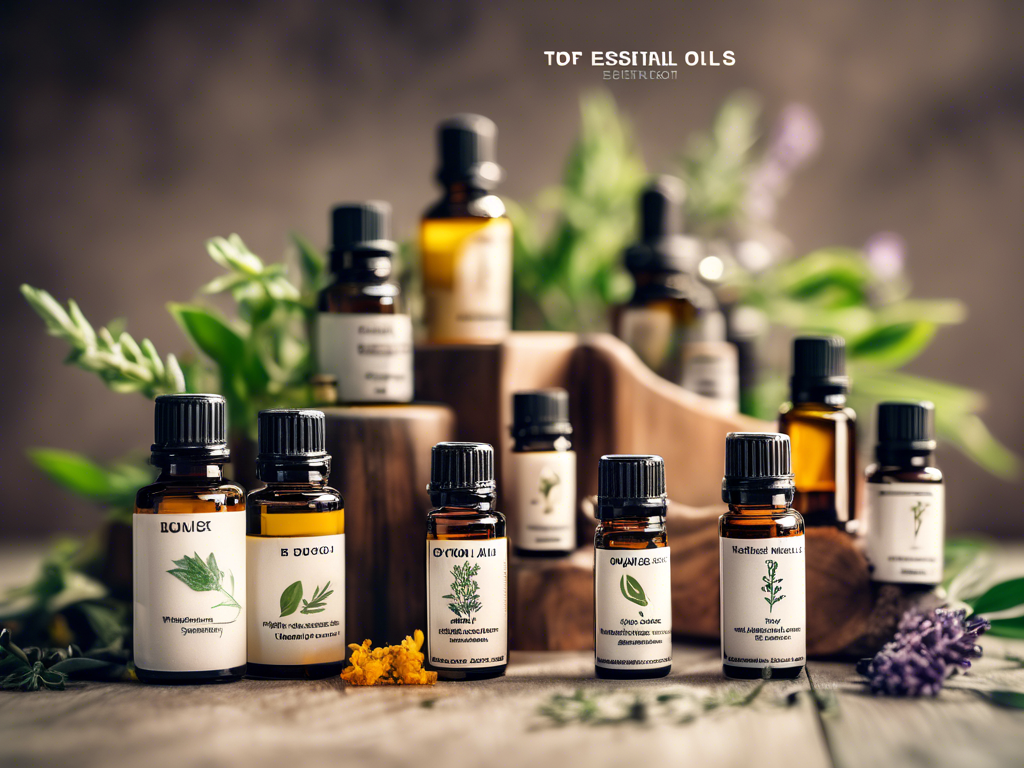
1. Lavender Oil: Nature’s Soothing Agent 🌸
Lavender oil is a staple in any essential oil first aid kit due to its incredible versatility. Known for its calming effects, lavender can help alleviate stress and anxiety, making it perfect for those tense moments. Additionally, it’s effective for treating minor burns, cuts, and insect bites, promoting faster healing and reducing pain.
2. Tea Tree Oil: The Antiseptic Powerhouse 🌿
When it comes to first aid kit essential oils, tea tree oil is unparalleled for its antiseptic properties. It can be used to tackle various skin issues, including acne, fungal infections, and small wounds. Its potent antibacterial qualities make it a must-have for disinfecting minor injuries and preventing infections.
3. Peppermint Oil: Instant Relief for Headaches 🌱
Peppermint oil is not only refreshing but also highly effective for providing relief from headaches and muscle tension. Adding this oil to your essential oil first aid kit enables you to create soothing balms or inhalants for quick relief. A simple application on the temples can work wonders!
4. Eucalyptus Oil: Breathe Easy 🌬️
Eucalyptus oil is renowned for its ability to clear airways and ease respiratory discomfort. Whether you’re dealing with a cold, cough, or congestion, having eucalyptus in your first aid kit essential oils will provide natural support for breathing. It can also be used as an insect repellent, making it doubly useful!
5. Frankincense Oil: Ancient Healing Wisdom 🕊️
Frankincense oil is often referred to as the “king of oils” for its profound healing benefits. It supports skin health by reducing scars and wrinkles while promoting cell regeneration. Including frankincense in your essential oil first aid kit not only enhances physical healing but also encourages emotional well-being through its grounding aroma.
6. Chamomile Oil: Gentle Comfort for Skin Irritations 🌼
Chamomile oil is excellent for soothing irritated skin. From rashes to sunburns, this oil calms inflammation and promotes healing. Incorporating chamomile into your first aid kit essential oils ensures that you have a gentle remedy for sensitive skin issues, especially for children.
7. Oregano Oil: Nature’s Antibiotic 💊
Oregano oil boasts powerful antimicrobial properties, making it a valuable addition to your essential oil first aid kit. Used externally, it can help combat bacterial infections and support the immune system. Just remember to dilute it well before applying!
8. Clary Sage Oil: Balancing Hormones 🌙
Clary sage oil is a great ally during menstrual discomfort and hormonal fluctuations. This oil not only addresses physical symptoms but also promotes emotional balance. Keeping clary sage in your first aid kit essential oils provides natural relief during those challenging times.
9. Lemongrass Oil: Refreshing and Invigorating 🍋
Lemongrass oil has antibacterial and antifungal properties, making it a great choice for minor injuries and skin issues. It also serves as a natural insect repellent. Ensure you pack lemongrass in your essential oil first aid kit for an uplifting aroma and healing benefits.
10. Basil Oil: Soothing Digestive Discomfort 🌿
Basil oil is not only aromatic but also functional. It’s known for its ability to ease digestive discomfort and relieve nausea. By including basil in your first aid kit essential oils, you are prepared to handle stomach-related issues effectively.
By incorporating these essential oils into your home first aid kit, you’ll be well-equipped to handle minor ailments naturally. Embrace the healing power of nature and ensure you and your loved ones are supported throughout the year! 🌟
Healing Naturally: Essential Oil Blends for Common Ailments
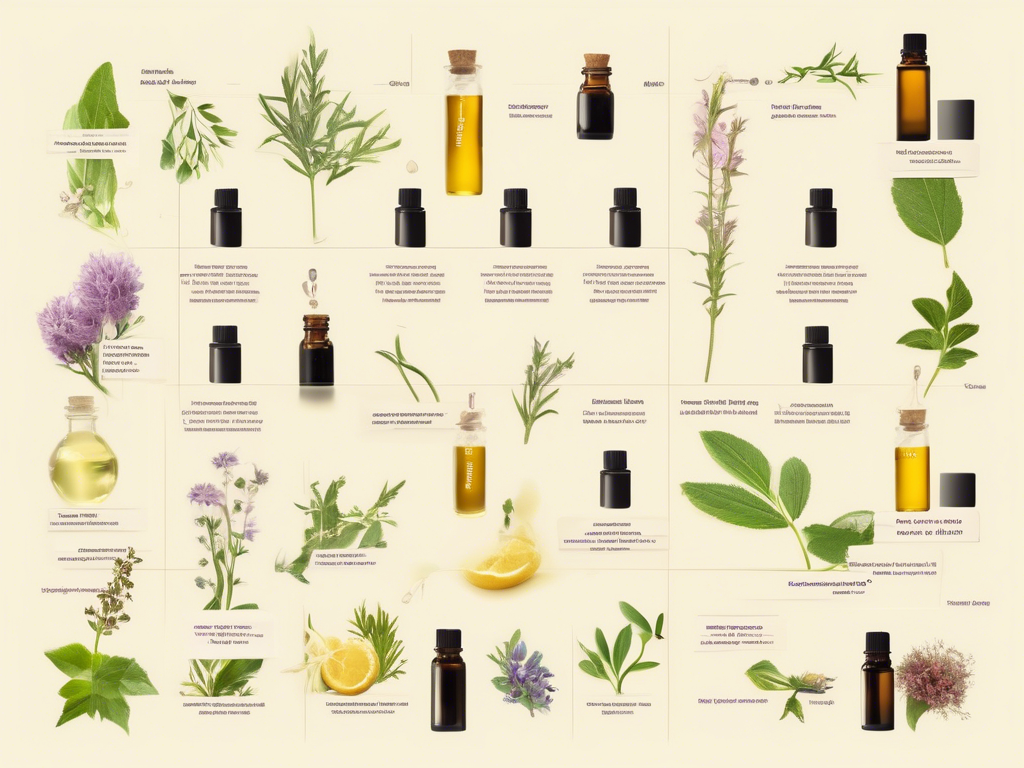
Quick Relief for Headaches 💆♀️
Headaches can disrupt your day, but with the right blend from your essential oil first aid kit, relief is just a few drops away. Combine 3 drops of peppermint oil with 2 drops of lavender oil and a carrier oil. Apply this mixture to your temples and massage gently. The cooling effect of peppermint alongside the calming properties of lavender can significantly ease discomfort.
Soothing Sore Muscles 🏋️♂️
After a tough workout or a long day, your muscles deserve some TLC! For muscle relief, create a blend by mixing 4 drops of eucalyptus oil, 3 drops of rosemary oil, and 1 tablespoon of a carrier oil. This soothing concoction promotes relaxation and aids recovery by improving circulation. Just rub it on the sore areas for instant relief!
Natural Remedies for Cuts and Scrapes 🚑
Accidents can happen, but nature offers powerful solutions. For minor cuts and scrapes, blend 2 drops of tea tree oil with 2 drops of lavender oil in 1 tablespoon of carrier oil. This blend not only disinfects the area but also promotes healing and reduces scarring. Apply it directly to the wound for optimal results.
Reviving Cold and Flu Symptoms 🤒
When colds strike, having a targeted blend can make all the difference. Create an uplifting blend by combining 3 drops of eucalyptus oil, 2 drops of peppermint oil, and 1 drop of lemon oil in a diffuser. This invigorating mix helps clear sinuses and boosts your mood, making it an essential part of your first aid kit essential oils when you’re feeling under the weather.
Calming Anxiety and Stress 🌈
In today’s fast-paced world, anxiety can creep in unexpectedly. To promote serenity, mix 4 drops of chamomile oil, 2 drops of frankincense oil, and 2 drops of lavender oil in a diffuser or a personal inhaler. Inhaling this calming blend can help ground your emotions and ease stress, providing a natural escape from daily pressures.
Digestive Support for Upset Stomachs 🍽️
For those moments when your stomach feels off, a simple essential oil blend can provide comfort. Mix 3 drops of ginger oil, 2 drops of peppermint oil, and a teaspoon of carrier oil. Gently rub this mixture on your abdomen in circular motions. This blend not only soothes digestive discomfort but also promotes overall wellness, making it a must-have in your essential oil first aid kit.
By utilizing these tailored blends in your first aid kit essential oils, you can manage common ailments naturally, empowering yourself and your loved ones to embrace holistic healing! 🌟
Essential Oil First Aid Kits: Your Go-To for Natural Healing in Emergencies
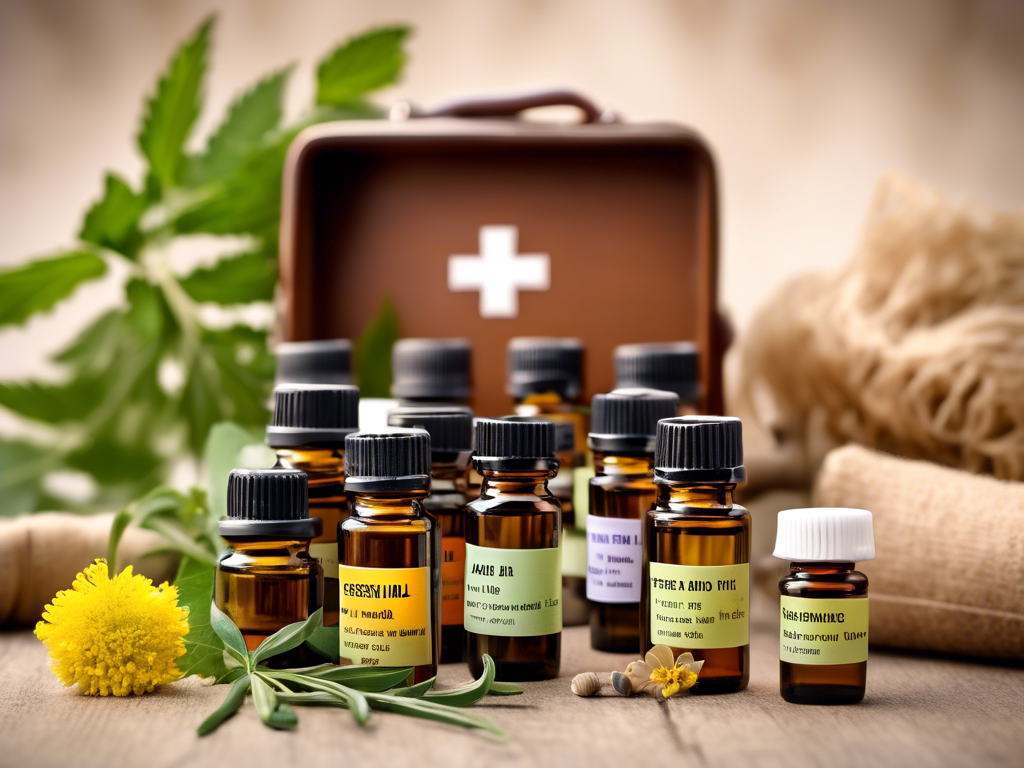
Why You Need an Essential Oil First Aid Kit 🩹
Having an essential oil first aid kit at your disposal can be a game-changer when it comes to addressing minor injuries and ailments quickly and naturally. These kits provide convenient access to a variety of essential oils that are known for their healing properties. From alleviating headaches and soothing burns to reducing anxiety and promoting relaxation, a well-stocked first aid kit can empower you to handle emergencies with confidence and ease.
Common Uses for First Aid Kit Essential Oils🚑
An effective first aid kit essential oils is versatile, catering to various ailments. Here are some common uses:
– **Burns**: Lavender oil can reduce pain and promote healing.
– **Insect Bites**: Tea tree oil offers antiseptic benefits to minimize swelling and prevent infection.
– **Headaches**: Peppermint oil provides cooling relief for tension and migraines.
– **Cuts and Scrapes**: A blend of tea tree and lavender oils helps disinfect and speed up recovery.
With these oils on hand, you can tackle minor mishaps and discomforts promptly! 🌿
How to Assemble Your Essential Oil First Aid Kit 🧳
Creating a personalized essential oil first aid kit doesn’t have to be complicated. Consider including the following essential oils:
– **Lavender**
– **Tea Tree**
– **Peppermint**
– **Eucalyptus**
– **Frankincense**
In addition to the oils, don’t forget to add carrier oils, small containers for blends, and basic first-aid supplies like bandages and antiseptic wipes. Organizing your kit will ensure you are prepared for any situation that arises!
Storing Your First Aid Kit Essential Oils Safely 🏠
To maximize the effectiveness of your first aid kit essential oils, proper storage is crucial. Follow these tips:
1. **Choose Dark Glass Containers**: Light can degrade essential oils, so opt for dark bottles.
2. **Keep Away from Heat**: Store oils in a cool, dry place away from direct sunlight and high temperatures.
3. **Seal Tightly**: Ensure caps are securely tightened to prevent evaporation and contamination.
Implementing these practices will help maintain the potency and longevity of your essential oils. 🔒
Essential Oil Safety Precautions ⚖️
While essential oils are natural, they must be used cautiously. Here are some key safety tips for your essential oil first aid kit:
– **Dilute Before Use**: Always dilute oils with a carrier oil before applying them to the skin.
– **Perform Patch Tests**: Test for allergic reactions by applying a small amount on your forearm.
– **Consult Professionals**: If you’re pregnant, breastfeeding, or have health conditions, seek guidance from a healthcare provider.
Staying informed about safe practices ensures that your first aid kit delivers healing effectively and responsively! 🌼
Unlocking the Benefits of Essential Oils: Must-Have Items for Your First Aid Kit

Understanding the Healing Power of Essential Oils 🌼
Incorporating essential oils into your essential oil first aid kit allows you to leverage the natural healing powers of plants. These oils possess properties such as anti-inflammatory, antiseptic, and analgesic effects, making them ideal for treating minor injuries and ailments. With the right selection of oils, you can address a range of issues from cuts and bruises to headaches and stress relief, promoting holistic well-being in your home.
Essential Oils for First Aid: A Closer Look 🩹
To ensure your first aid kit essential oils is effective, consider including these powerhouse oils:
– **Lavender Oil**: Provides soothing relief for burns and cuts while promoting relaxation.
– **Tea Tree Oil**: Known for its antimicrobial properties, it’s perfect for preventing infections.
– **Peppermint Oil**: Offers cooling effects for headaches and muscle pain.
– **Eucalyptus Oil**: Aids in respiratory health and acts as a natural insect repellent.
– **Frankincense Oil**: Supports skin healing and reduces inflammation.
By focusing on these essentials, your kit will be equipped to handle various minor health concerns!
Creating Targeted Blends for Your Kit 🧴
Crafting specific blends can enhance the efficacy of your essential oil first aid kit. Here are a few combinations to try:
– **Soothe Burns**: Combine 2 drops of lavender oil with 1 tablespoon of carrier oil for a calming ointment.
– **Ease Headaches**: Mix 3 drops of peppermint oil, 2 drops of lavender oil, and 1 tablespoon of carrier oil for topical relief.
– **Combat Cold Symptoms**: Blend 3 drops of eucalyptus oil with 2 drops of lemon oil in a diffuser to clear airways.
These blends provide focused relief and can be easily tailored to individual needs!
Staying Safe with Your Essential Oils ⚖️
To maximize the benefits of your first aid kit essential oils, it’s essential to prioritize safety. Keep these guidelines in mind:
1. **Dilute**: Always dilute with a carrier oil before applying to the skin.
2. **Perform Patch Tests**: Conduct tests for allergic reactions by applying to a small area first.
3. **Storage**: Keep oils in a cool, dark place to preserve their potency.
By adhering to these safety precautions, you can ensure a secure and effective experience with your essential oils.
Assembling Your Essential Oil First Aid Kit 🧳
When putting together your essential oil first aid kit, make sure to gather the following items:
– Essential oil bottles (Lavender, Tea Tree, Peppermint, Eucalyptus, Frankincense)
– Carrier oils (Coconut oil, Jojoba oil)
– Glass dropper or roller bottles for easy application
– Small containers for making DIY blends
– Labels for organization
– Basic first-aid supplies (band-aids, gauze, antiseptic wipes)
Organizing these components helps you respond quickly to any minor health issue that arises, empowering you to heal naturally! 🌿
How to Use Essential Oils Safely and Effectively in Your First Aid Kit

Understanding Dilution and Application 🧴
Using **essential oils** safely starts with understanding the importance of dilution. Always dilute essential oils with a carrier oil such as coconut or jojoba oil before applying them directly to the skin. This step helps prevent skin irritation and enhances absorption. A general guideline is to add about 1-3 drops of essential oil to every teaspoon of carrier oil. This ensures that your first aid kit essential oils are effective while minimizing the risk of adverse reactions.
Conducting Patch Tests for Safety ⚖️
Before using any new **essential oil** in your **essential oil first aid kit**, it’s crucial to perform a patch test. Apply a small amount of the diluted oil to a discreet area of skin, like your wrist or the inside of your elbow. Wait for 24 hours to see if any irritation occurs. This process can help you identify any potential allergies or sensitivities, ensuring that your **first aid kit essential oils** are safe for use.
Storage Tips for Longevity 🌡️
Proper storage of your essential oil first aid kit is essential for maintaining the oils’ effectiveness. Here are some tips for optimal storage:
– **Cool and Dark**: Store oils in a cool, dark place away from sunlight and heat.
– **Use Dark Glass Bottles**: These help protect the oils from light degradation.
– **Tightly Sealed**: Ensure all caps are tightly secured to prevent evaporation.
By following these storage practices, you ensure your **first aid kit essential oils** remain potent and ready for use!
Consulting Healthcare Professionals 🩺
When incorporating **essential oils** into your healing routine, consulting with a healthcare professional is advisable, especially if you are pregnant, breastfeeding, or have existing health conditions. A knowledgeable practitioner can offer guidance on safe usage and any specific oils to avoid. This step is vital to ensure that your **essential oil first aid kit** provides safe and effective support for your health needs.
Creating Customized Blends for Effectiveness 🌼
One of the best ways to utilize your first aid kit essential oils is by creating customized blends tailored to specific ailments. For example:
– **For Insect Bites**: Mix 2 drops of tea tree oil with 1 drop of peppermint oil and 1 tablespoon of carrier oil.
– **For Cuts and Scrapes**: Combine 2 drops of lavender oil and 1 drop of frankincense oil in 1 tablespoon of a carrier oil.
These blends can enhance the effectiveness of your **essential oil first aid kit**, providing targeted relief for various minor injuries.
By following these guidelines, you can use **essential oils** safely and effectively, maximizing their benefits in your **essential oil first aid kit** for 2024! 🌿
The Ultimate Guide to Crafting a Versatile Essential Oil First Aid Kit
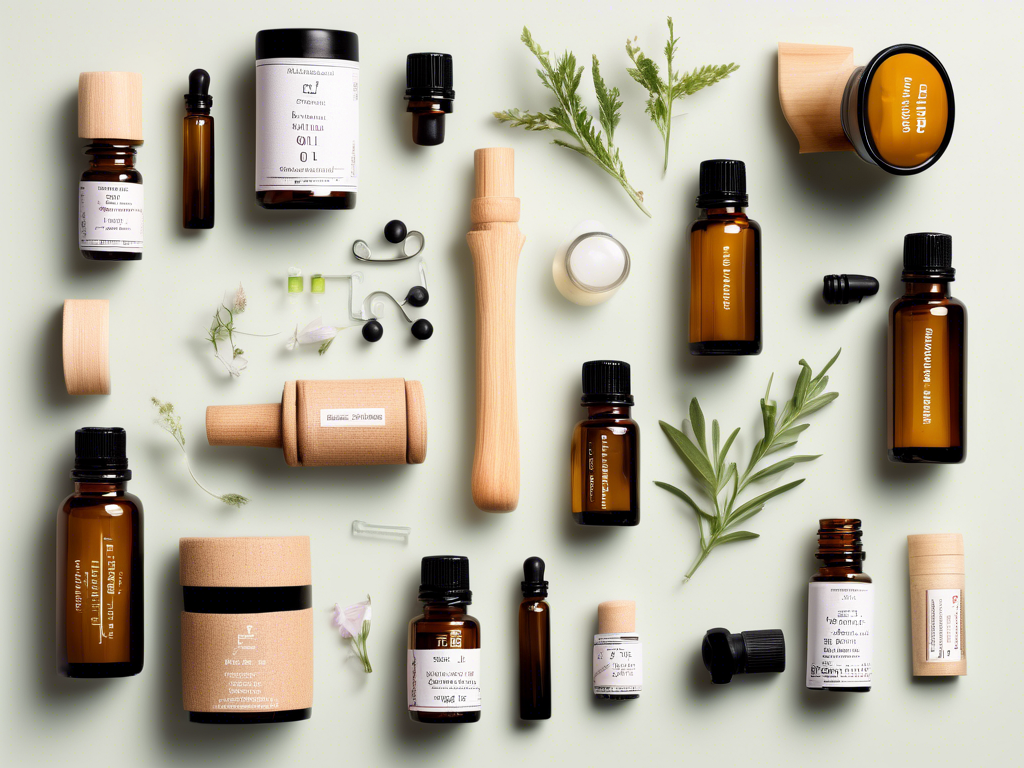
Choosing the Right Essential Oils for Your Kit 🧴
When assembling your essential oil first aid kit, selecting the right oils is crucial for effective natural healing. Here are key oils to include for their versatile properties:
– **Tea Tree Oil**: Known for its antiseptic qualities, it’s perfect for treating cuts and scrapes.
– **Lavender Oil**: Great for calming burns and promoting relaxation.
– **Peppermint Oil**: Ideal for headaches and muscle pain due to its soothing coolness.
– **Frankincense Oil**: Supports skin regeneration and has anti-inflammatory effects.
By incorporating these essential oils, your first aid kit essential oils will be ready to tackle common ailments! 🌼
Essential Items for Your First Aid Kit 🧳
An effective essential oil first aid kit should include various items beyond just oils. Consider including:
– **Carrier Oils**: Such as coconut or jojoba oil for safe application.
– **Glass Dropper or Roller Bottles**: For easy dispensing of oils.
– **Small Containers**: For mixing your custom blends.
– **Labels**: To keep your kit organized.
– **Basic First-Aid Supplies**: Band-aids, gauze, and antiseptic wipes.
Having these essentials ensures you’re well-prepared for any situation that arises! 🚑
How to Create Custom Blends for Common Issues 🌈
Creating customized blends can enhance the efficacy of your first aid kit essential oils. Here are some targeted blends to consider:
– **Burn Relief**: Mix 2 drops of lavender oil with 1 tablespoon of carrier oil for soothing relief.
– **Muscle Soreness**: Combine 3 drops of peppermint oil with 2 drops of eucalyptus in a carrier oil for post-workout relief.
– **Calming Anxiety**: Blend 4 drops of chamomile oil and 3 drops of frankincense in a diffuser for a peaceful atmosphere.
These blends empower you to address specific ailments quickly and effectively! ✨
Tips for Safe Usage of Essential Oils ⚖️
While using essential oils from your essential oil first aid kit can be incredibly beneficial, safety is paramount. Follow these key guidelines:
1. **Dilution is Key**: Always dilute essential oils with a carrier oil before applying to the skin.
2. **Patch Tests**: Conduct patch tests to check for allergic reactions prior to full use.
3. **Consultation**: Seek advice from healthcare professionals if you are pregnant or have existing health issues.
Adhering to these tips will help ensure that your use of essential oils is both safe and effective! 🩹
Maintaining Your Essential Oil First Aid Kit for Longevity 🌡️
To keep your first aid kit essential oils potent over time, storage is critical. Consider the following:
– **Store in Dark Glass Containers**: This helps prevent light degradation of the oils.
– **Keep Out of Heat**: Store in a cool, dry place away from direct sunlight.
– **Seal Tightly**: Always ensure caps are tightly secured to minimize evaporation.
Implementing these storage tips ensures that your essential oils maintain their effectiveness, making your essential oil first aid kit a reliable resource for natural healing! 🌿
Essential Oils vs. Traditional Medicine: Strengthening Your First Aid Strategy
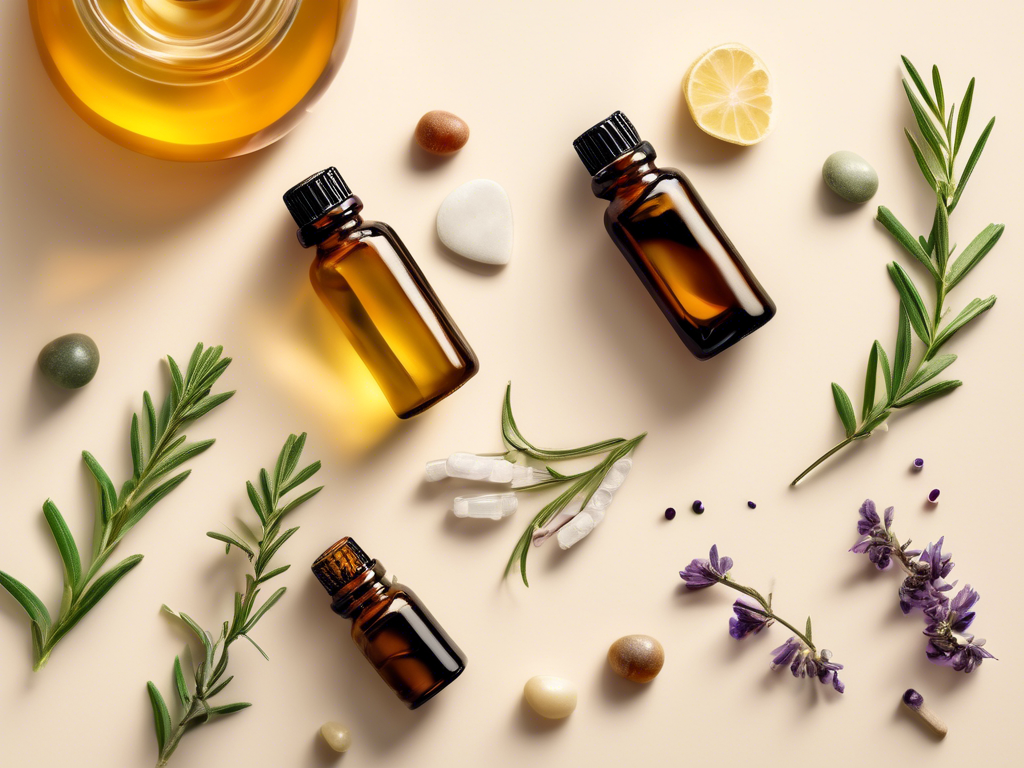
Understanding the Role of Essential Oils in First Aid 🌱
Integrating essential oil first aid kits alongside traditional medicine can create a comprehensive approach to wellness. Essential oils offer natural remedies that can complement conventional treatments. For instance, while antiseptic creams might be effective for minor cuts, adding a few drops of tea tree oil can further enhance the healing process due to its potent antibacterial properties. This synergy helps you harness the benefits of both worlds for more effective and holistic care.
Comparative Benefits of Essential Oils and Traditional Treatments ⚖️
When evaluating first aid kit essential oils against traditional medicine, it’s important to recognize their distinct advantages:
– **Natural Composition**: Essential oils are derived from plants, offering a chemical-free alternative that appeals to those seeking natural solutions.
– **Multi-functional Use**: Many essential oils, such as lavender and peppermint, can address multiple issues like burns, headaches, and stress relief, whereas traditional medicines often target specific symptoms.
– **Emotional and Physical Healing**: In addition to physical benefits, essential oils can positively affect emotional well-being, providing calming effects suitable for anxiety or stress reduction.
Embracing both approaches enables individuals to tailor their first-aid responses to their unique needs. 🌼
Combining Approaches: When to Use Essential Oils vs. Traditional Medicine 🏥
While essential oils can provide significant benefits, there are times when traditional medicine is necessary. Consider these guidelines:
– **Minor Injuries**: Use essential oils for cuts, scrapes, and minor burns where natural healing can be effective.
– **Persistent Conditions**: For ongoing health issues or severe infections, consult a healthcare professional and consider using traditional medication.
– **Allergies and Sensitivities**: If you have known allergies to specific plants, traditional treatments may be the safer route.
Balancing the use of both can optimize recovery while minimizing risks associated with untreated ailments! 🌈
Integrating Essential Oils into Emergency Situations 🚑
In emergencies, having a robust essential oil first aid kit at your disposal can enhance your response strategy. Here are some tips for quick integration:
– **Know Your Oils**: Familiarize yourself with the properties of your essential oils—knowing which oils to use for specific ailments can save valuable time.
– **Create Easy Reference Guides**: Keep a laminated card in your kit detailing which oils to use for different scenarios (e.g., lavender for burns, tea tree for infections).
– **Quick Application Methods**: Use roller bottles or pre-diluted blends for rapid application, especially in urgent situations where every second counts.
These strategies ensure that you are prepared to incorporate essential oils swiftly and effectively alongside traditional methods during emergencies. 🌟
Building a Support Network for Natural Healing 🤝
Strengthening your first-aid strategy with essential oils can also involve engaging with others. Consider joining local groups or online communities focused on natural healing. This network can provide:
– **Shared Experiences**: Learn from others’ successes and challenges in using essential oils alongside traditional treatments.
– **Resource Exchange**: Gain access to guides, recipes, and tips to optimize your first aid kit essential oils.
– **Support Systems**: Understanding that you’re not alone in your natural wellness journey can help bolster confidence in your decisions.
Harnessing the collective wisdom of a community can enrich your understanding and application of essential oils in your health practices. 🌿
Natural Remedies: Essential Oil Solutions for Everyday Injuries and Illnesses
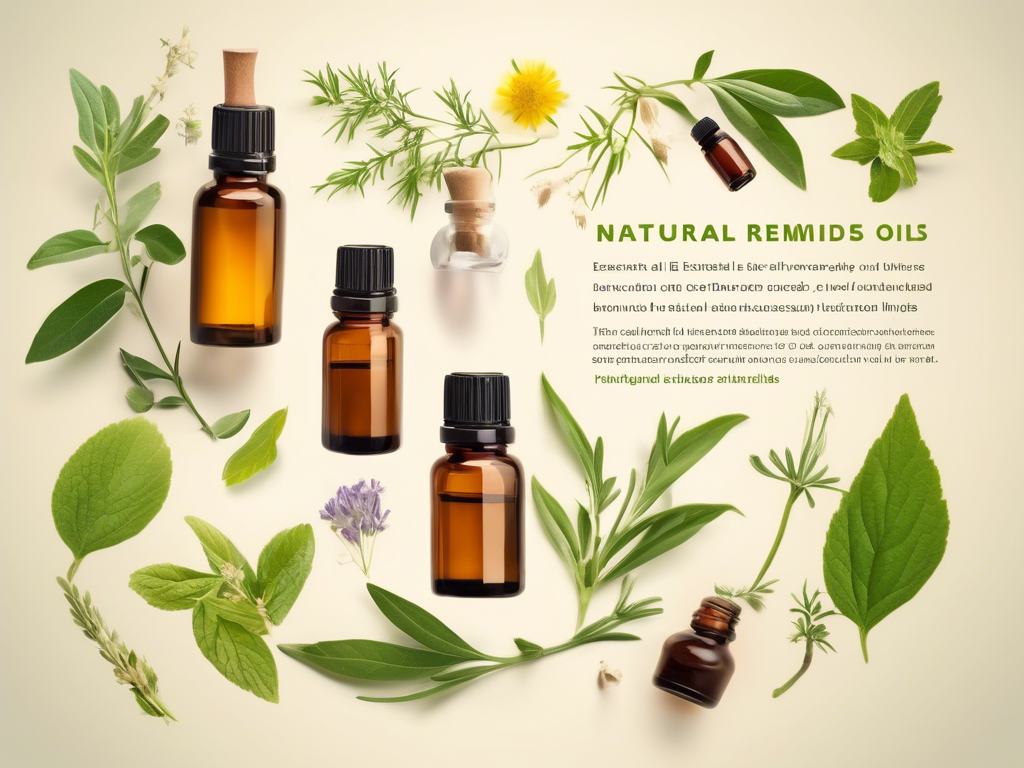
Essential Oils for Common Ailments 🌿
When it comes to healing naturally, your essential oil first aid kit can be invaluable. The versatility of essential oils means that they can help alleviate a range of everyday injuries and illnesses. Here are some key oils to consider for common issues:
– **Lavender Oil**: Ideal for soothing burns and cuts while also promoting relaxation.
– **Tea Tree Oil**: A go-to antiseptic for treating minor wounds and preventing infections.
– **Peppermint Oil**: Excellent for headaches and muscle aches due to its cooling properties.
– **Eucalyptus Oil**: Supports respiratory health and can help clear congestion.
With these essential oils in your kit, you’ll be prepared to tackle minor health concerns effectively!
Quick Blends for Everyday Injuries 🧴
Creating blends tailored to specific ailments can enhance the efficacy of your first aid kit essential oils. Here are a few simple recipes:
– **For Cuts and Scrapes**: Mix 2 drops of tea tree oil and 2 drops of lavender oil with 1 tablespoon of carrier oil. Apply gently to the affected area to disinfect and promote healing.
– **For Headaches**: Combine 3 drops of peppermint oil with 2 drops of lavender oil in a carrier oil and massage onto temples for instant relief.
– **For Respiratory Relief**: Blend 3 drops of eucalyptus oil with 2 drops of peppermint oil in a diffuser to help clear airways and ease breathing.
These blends provide straightforward solutions when you need quick relief! 🌟
Using Essential Oils Safely ⚖️
Safety is crucial when incorporating essential oils into your healing routine. Here are important guidelines to ensure safe use from your essential oil first aid kit:
1. **Dilution**: Always dilute essential oils with a carrier oil before applying them to the skin.
2. **Patch Testing**: Conduct a patch test on a small area of skin to check for allergic reactions.
3. **Consult Professionals**: If you have health conditions or are pregnant, consult a healthcare professional before using essential oils.
By following these safety tips, you can enjoy the benefits of essential oils while minimizing risks!
Organizing Your First Aid Kit Essentials 🧳
A well-organized first aid kit essential oils allows for quick access during emergencies. Here’s how to keep your kit efficient and ready:
– **Essential Oils**: Lavender, Tea Tree, Peppermint, Eucalyptus, Frankincense.
– **Carrier Oils**: Coconut, Jojoba for diluting purposes.
– **Application Tools**: Roller bottles or glass droppers for easy use.
– **Labels**: Clearly label each bottle for easy identification.
– **First-Aid Supplies**: Don’t forget band-aids and antiseptic wipes for physical injuries.
Being organized ensures that you can quickly respond to any minor ailment with natural solutions! 🌼
Tailored Solutions for Stress and Anxiety 🌈
Emotional health is just as important as physical well-being. Your essential oil first aid kit can help manage stress and anxiety effectively. Consider these blends:
– **Calming Diffuser Blend**: Combine 4 drops of lavender oil and 2 drops of frankincense oil in a diffuser to create a peaceful atmosphere.
– **Stress Relief Roll-On**: Mix 5 drops of chamomile oil with 3 drops of bergamot oil in a roller bottle filled with carrier oil for stress relief on-the-go.
Incorporating these targeted blends will help you maintain emotional balance during challenging times! 🌼
Summing up
Throughout this exploration of the essential oil first aid kit, we have uncovered the myriad benefits these natural remedies offer, from alleviating common ailments to providing peace of mind in emergencies. With the right knowledge and tools at your disposal, incorporating first aid kit essential oils into your health routine can significantly enhance your family’s overall wellness. This kit represents more than just a collection of oils; it symbolizes a commitment to natural healing and an awareness of the powerful resources found in our environment.
As we look towards the future, it’s vital to understand the balance between essential oils and traditional medicine. While they are not replacements for professional medical care, they serve as complementary tools that empower individuals to take charge of their health. By blending scientific research with the rich traditions of herbal medicine, you can craft a personal first aid kit essential oils that resonates with your health philosophy.
Incorporating these insights into your daily life can pave the way for a healthier, more sustainable approach to wellness. So, why wait? Begin today by crafting your unique essential oil first aid kit and step into a world where nature meets care, allowing you and your loved ones to heal naturally. Remember, the journey to better health starts with the choices you make today. Take the plunge, trust in nature, and embrace the healing potential that awaits you!
